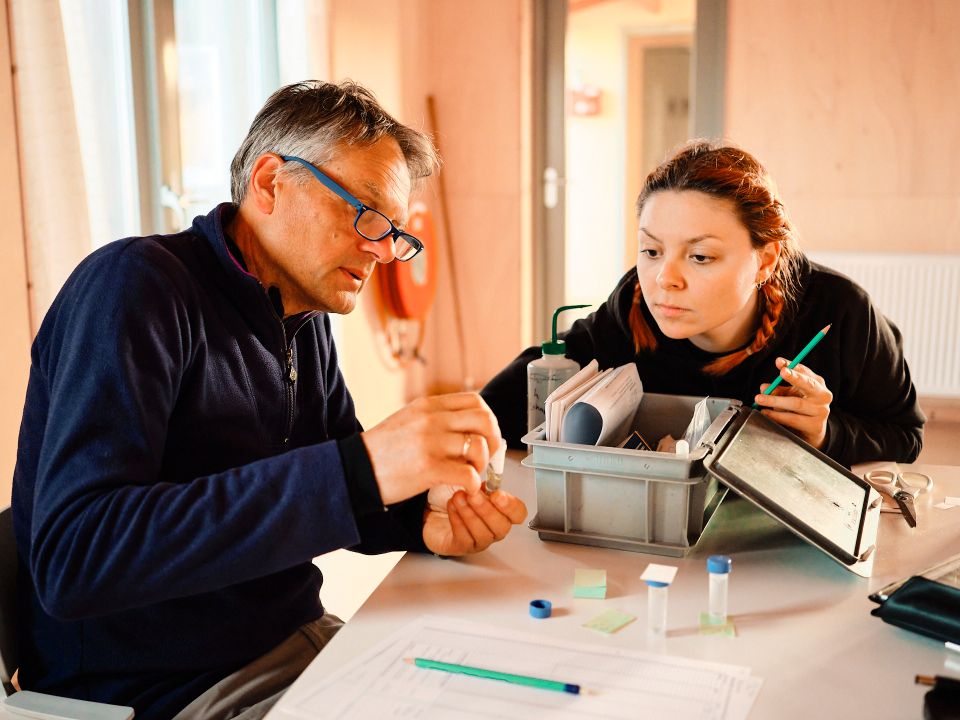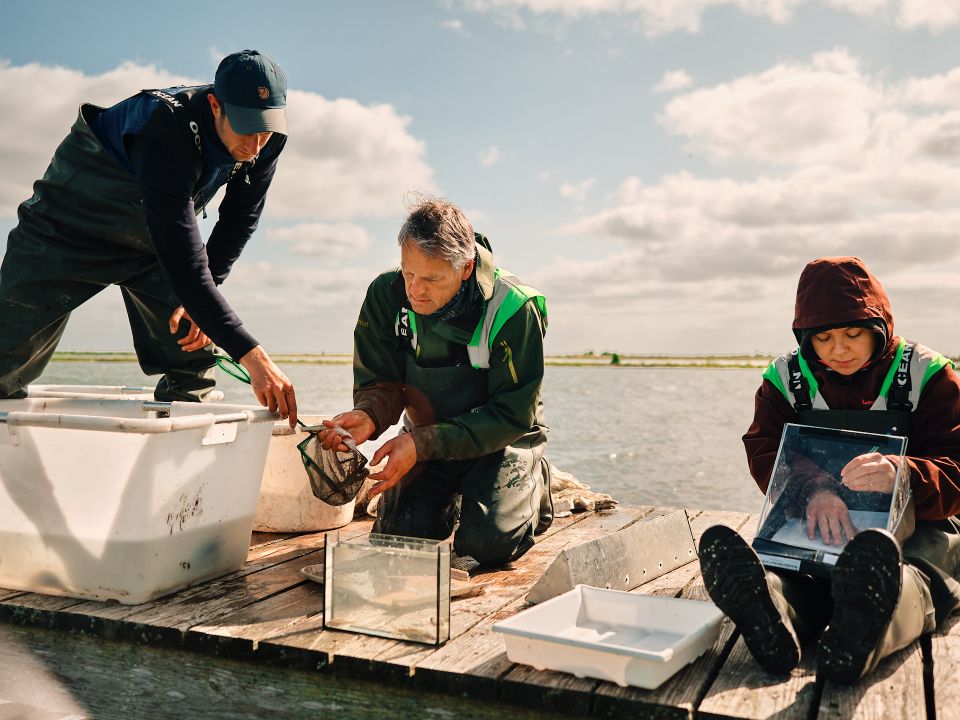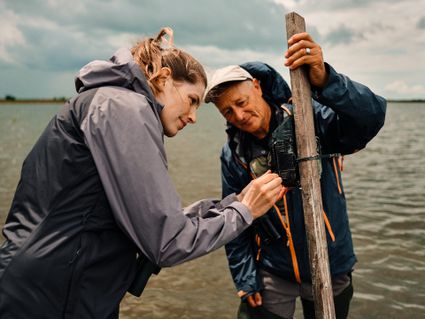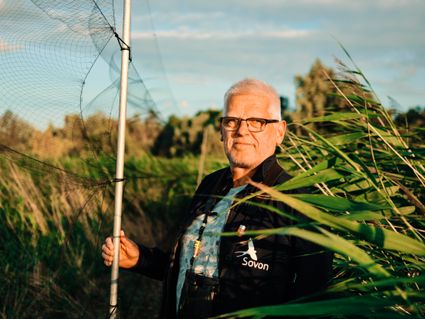From ‘dead lake’ to breeding ground for fish and water birds. - Ecologist Joep de Leeuw investigates the nature restoration effect of Marker Wadden.
Joep de Leeuw is senior researcher in fish ecology at Wageningen Marine Research. For Natuurmonumenten, he studies the effect and further development of Marker Wadden on the ecosystem and biodiversity in the Markermeer. His focus is on the fish, but the birds are inextricably linked to this. 'If life under the water goes well, then life above the water also goes well.'
The Markermeer was long known as a "dead lake. After the closure by the Houtrib Dike in 1976, there was no longer a connection to the IJsselmeer and thus no longer a flow from the IJssel. This created a thick silt blanket with a suffocating effect on bottom life, the place where the food chain begins. Yet the Markermeer was anything but dead, says Joep: "It's true that the stock of fish and therefore birds has declined considerably over the past twenty years. And there are all kinds of human causes for this. At the same time we see that life here has adapted to the turbid conditions and all kinds of organisms can still grow here just fine. The question then is: how can you stimulate this organic growth in a natural way, so that the entire ecosystem benefits? Well, that's exactly why Marker Wadden was conceived.'
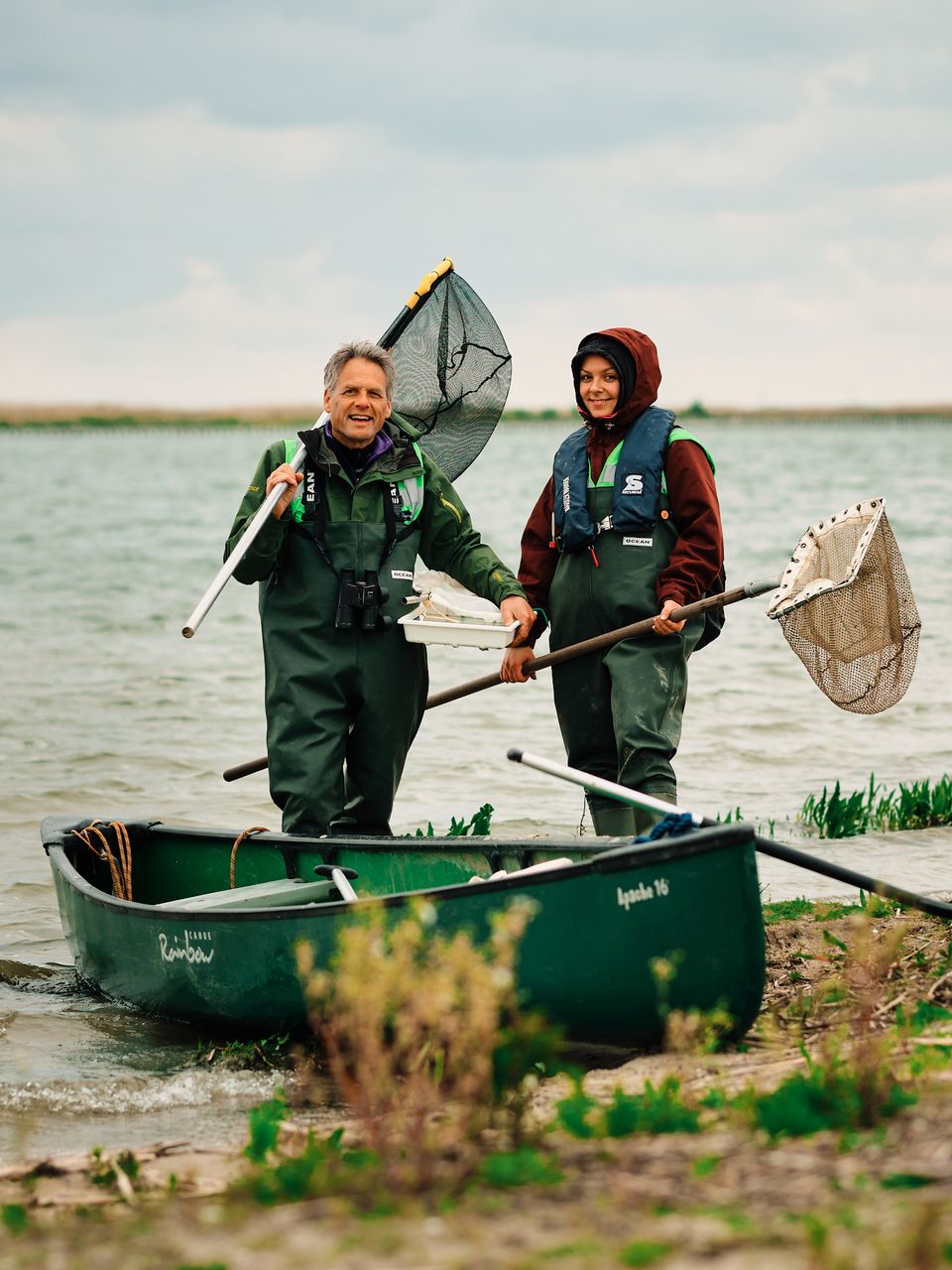
“ Birds are the ambassadors of the bigger story. ”
New nature
Marker Wadden is a group of nature islands constructed between 2016 and 2021 with sand, clay and silt from the Markermeer. The many land-water transitions create new nature with aquatic plants and reed beds where birds can breed and fish can spawn. At the same time, the islands provide lee, allowing the silt to settle earlier, creating more space for higher organic life, such as plankton and shellfish. Endangered animal and plant species also benefit from this. Joep: "Fish and plants thrive best in shallow and gradually sloping water. However, the basalt dikes that surround the Markermeer run steeply down to a depth of three to four meters. Little grows there. With our research we are trying to find out whether the natural banks of the islands indeed attract fish and also what is the best way to set up these islands. For example, we discovered that some places suffer a lot of erosion, which in turn affects the planting and the protection this offers the fish. This means that when further developing the islands you have to look carefully at the effect of all the wind and water currents.
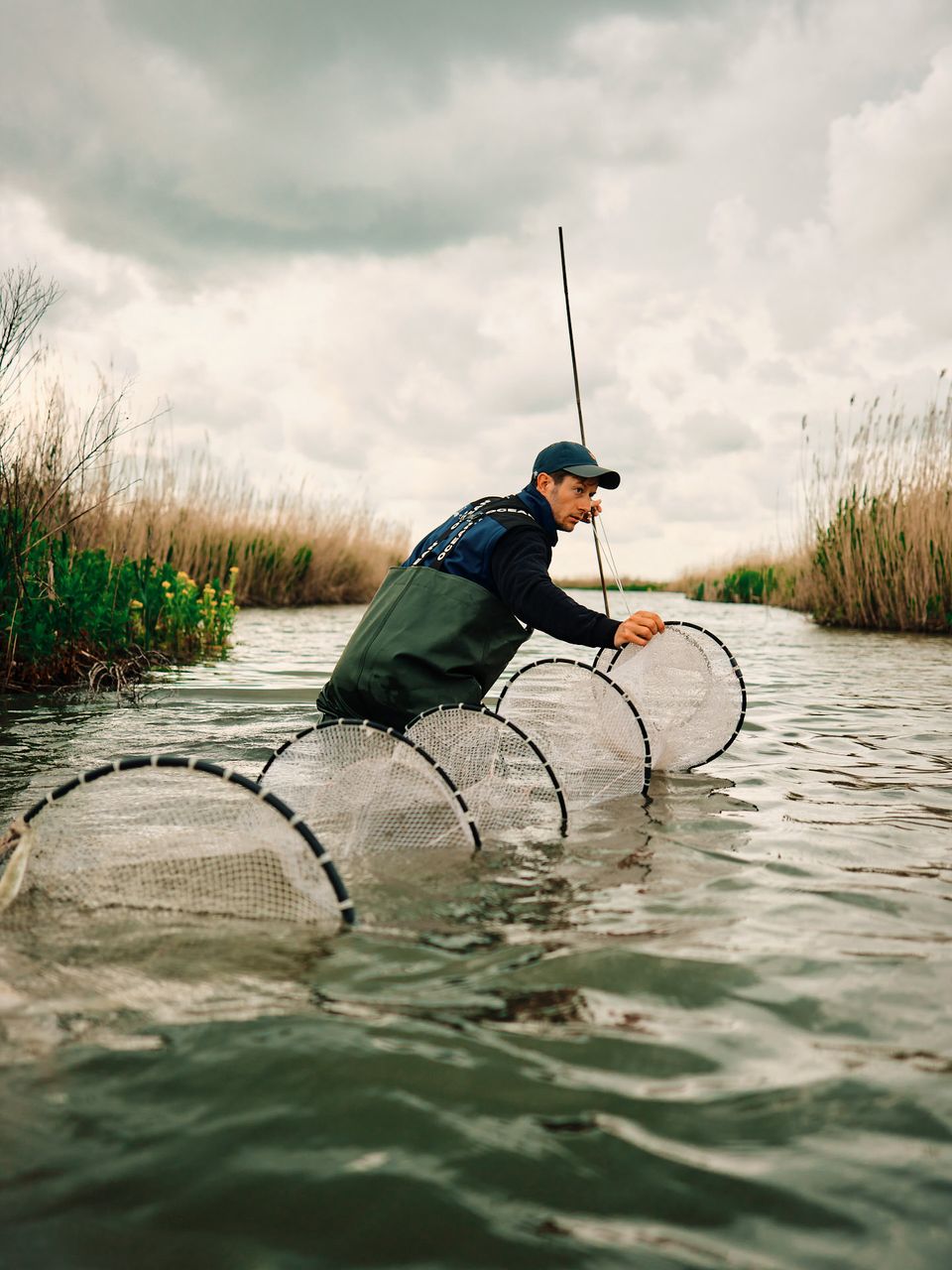
Gully connections
Joep has been active in the area for about four years now and has already observed many positive developments. 'You see that every year there are more aquatic plants and that this also attracts other fish species. So in addition to the usual roaches, we now count a lot of whitefish, rudd and tench in our traps. These are really reed-dependent species. In addition, over the past two years, a gully system has been constructed between the island banks and the open water so that even larger fish can get into shallow, nutrient-rich water to deposit eggs and their offspring can swim back to deeper water when they mature. At the same time, we also see predatory fish swimming in and feasting on the smaller fish. This in turn creates a whole new ecological balance.

More bird species
Even though Joep's research seems to focus on fish and aquatic plants, the higher goal of his client Natuurmonumenten is also to make the area richer in bird species. 'Because this is a Natura 2000 area, we have to deal with European obligations to restore certain bird species, such as netters, great grannies, grebes, common terns, black terns, avocets and spoonbills. So Marker Wadden, besides being a nursery for fish, is also an important feeding and nesting area for birds; if life under water goes well, so does life above water. And birds are a lot more visible and therefore measurable than fish and aquatic plants. That is what tourists come to the landscape for. In that respect the birds are actually the ambassadors of the bigger story. Namely that by creating shallow zones and nature islands in the lake you can give a boost to species diversity in the entire area.
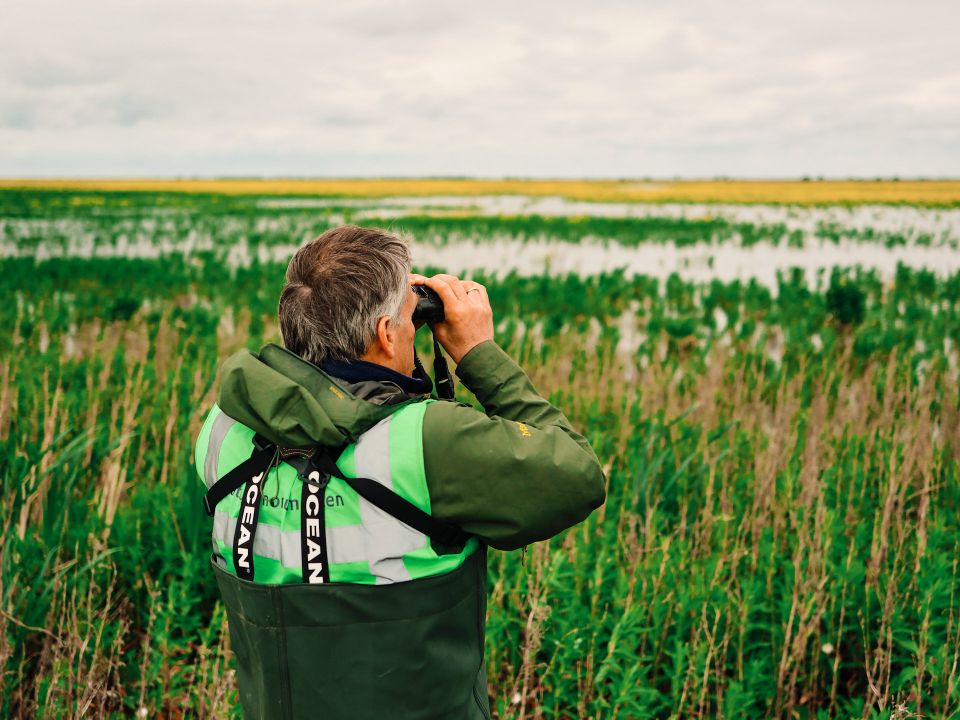
Follow-up research
The big question now is whether we have enough of these shallow zones and nature islands to speak of a measurable effect. And what is the impact of Marker Wadden on the rest of the lake and the Nieuw Land National Park in a broad sense? That is the research we will be working on in the next five years, together with Deltares, Witteveen+Bos and other parties.
